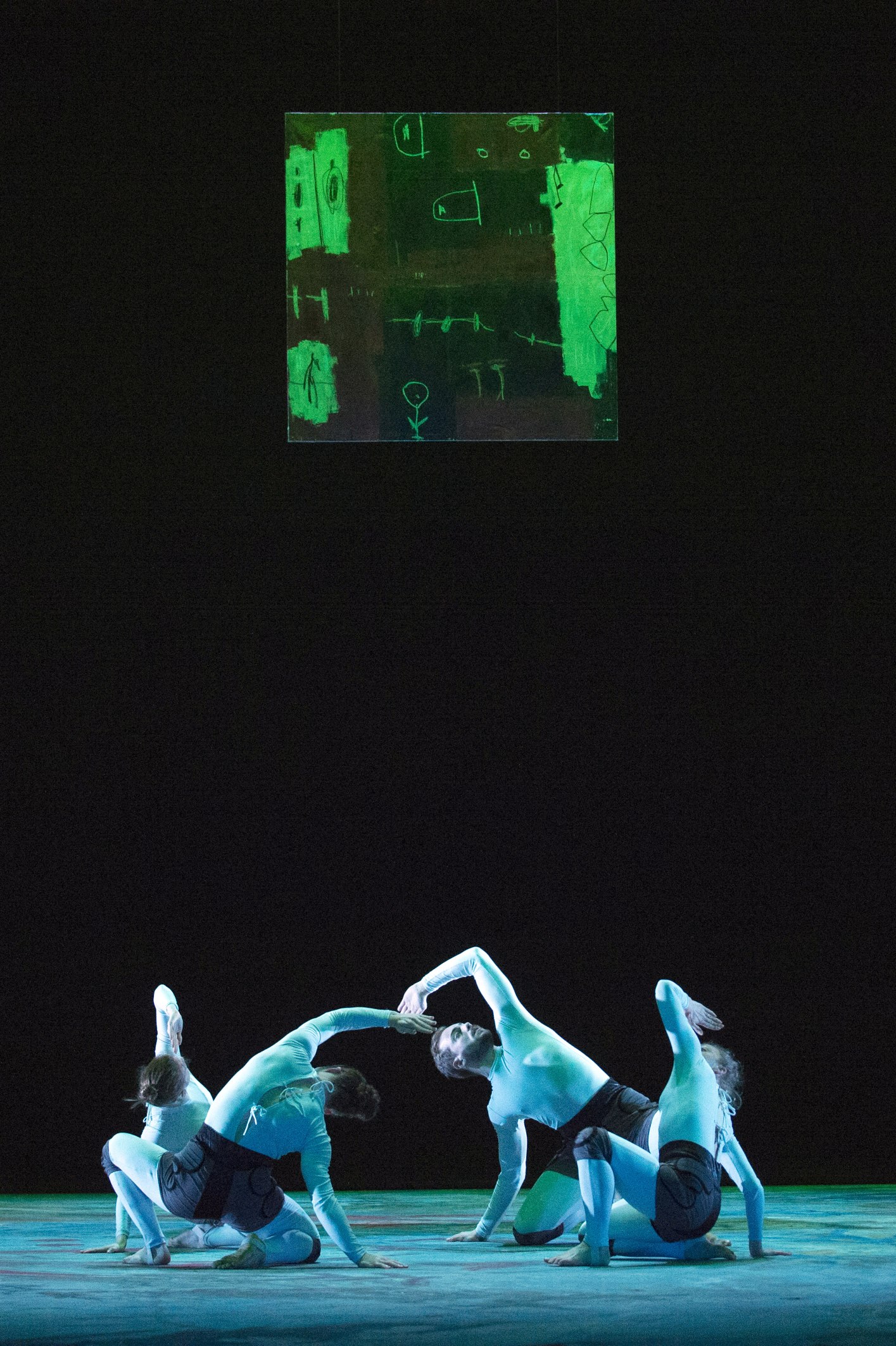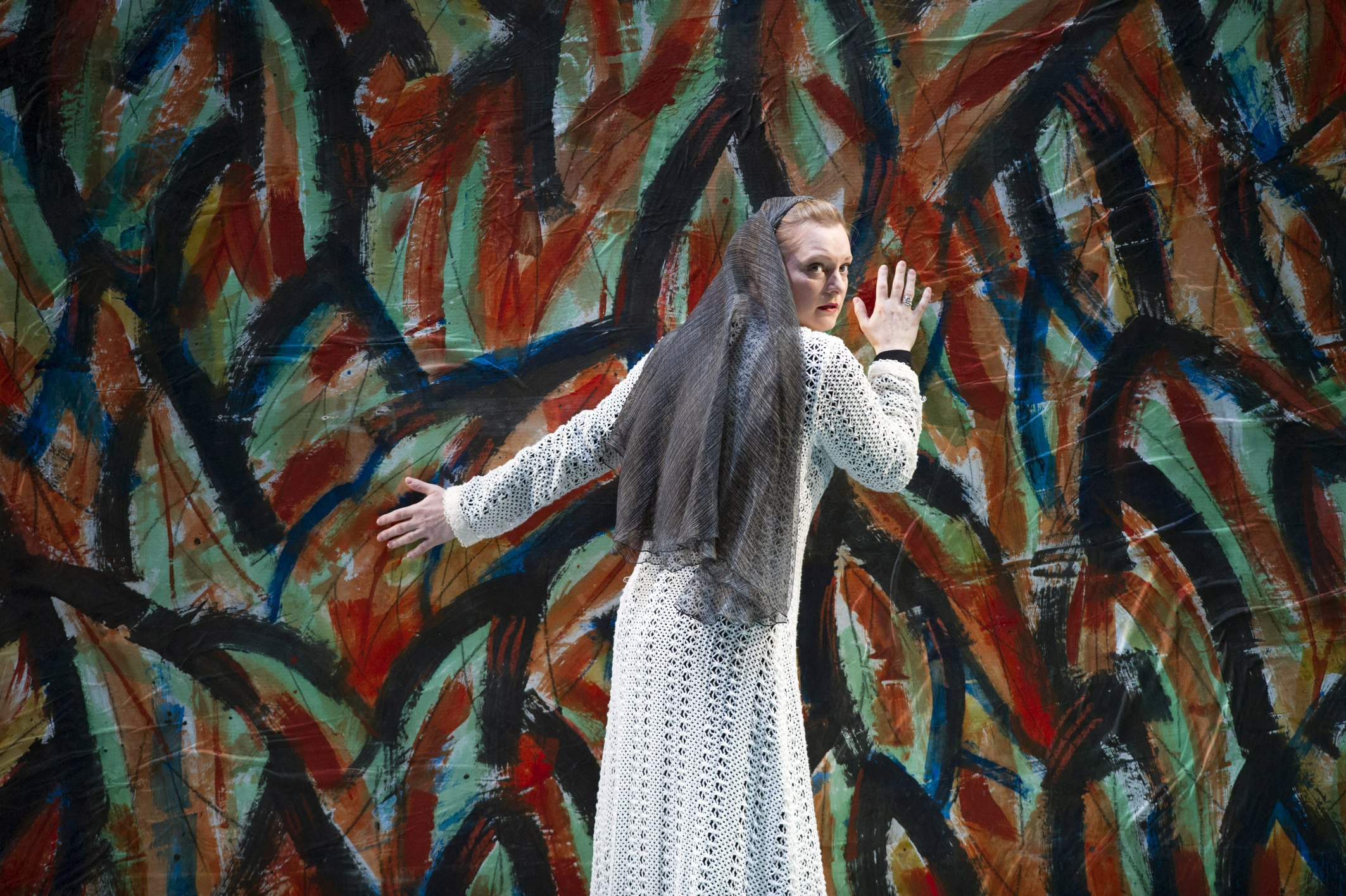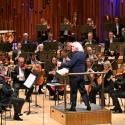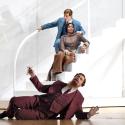When Purcell died at just 36, he left The Indian Queen unfinished, which only adds to the usual problems of staging his "semi-operas" – plays with musical interludes which don’t really accord with modern operatic tastes, despite the ravishing beauty of the music itself.
Rather than tinkering around the edges, Peter Sellars – the director best known for his long-standing partnership with John Adams – has created a new piece entirely. Its narrated plot, borrowed from Nicaraguan novelist Rosario Aguilar's The Lost Chronicles of Terra Firma, is set around a particularly savage episode in the Spanish conquistadors' treatment of the natives, and is dressed with music from the original Indian Queen, plus significant additions of unrelated anthems and songs by Purcell, some with new texts, some not, the total clocking in at over three hours. So far, so good, except it just doesn’t work – at least not as a piece of theatre.
It all starts oddly, with four dancers (pictured below) writhing silently to generic jungle sounds playing loudly from the speakers. This acoustic backdrop suddenly drops out, and the orchestra picks up a short instrumental air. Then the jungle noise cuts back in, then back to the orchestra, five alternations in total.
 Throughout, there is plenty of action on stage, especially from the four dancers who work their socks off, but it is rarely clear what relationship any of it has to the plot. The music, every note given exquisite attention by conductor Laurence Cummings and the orchestra, is too frequently undermined by the niggling question, “What’s this got to do with anything?”
Throughout, there is plenty of action on stage, especially from the four dancers who work their socks off, but it is rarely clear what relationship any of it has to the plot. The music, every note given exquisite attention by conductor Laurence Cummings and the orchestra, is too frequently undermined by the niggling question, “What’s this got to do with anything?”
Much is signposted in the surtitles, but simply labelling something "The Invasion of Human Dreams" or "Divine Mirror of the Lovers" is not a dramatic device, it’s a cop-out. More puzzlingly still, "The Apotheosis of Chief Tecum, the Massacre, and the River of Blood" is followed by Hear my prayer, O Lord. It’s a heavy burden for this very familiar anthem, and it suffers further through the rather muscular instrument of the ENO chorus, which obscures the delicate strands of unfolding polyphony with misplaced operatic gusto.
Indeed the chorus, normally a highlight of any ENO production, is subjected to various indignities, including acting out the polyphonic entries of Blow up the trumpet in Sion with trumpety gestures, looking like a community choir playing a warm-up game.
 There is, however, much to enjoy in the individual performances of a strong cast, including a pair of superb counter-tenors, Anthony Roth Costanzo and Vince Yi, whose contrasting timbres complement each other beautifully. The two tenors, Noah Stewart and Thomas Walker, are excellent though underused, while baritone Luthando Qave adds a rich anchor to the otherwise top-heavy palette. Julia Bullock as Teculihuatzin is the main focal point and handles it well, with a particularly memorable I attempt from Love’s sickness. Lucy Crowe (pictured above) as Doña Isabel has an obvious affinity for Purcell’s music and provides some of the most cherishable moments of the evening.
There is, however, much to enjoy in the individual performances of a strong cast, including a pair of superb counter-tenors, Anthony Roth Costanzo and Vince Yi, whose contrasting timbres complement each other beautifully. The two tenors, Noah Stewart and Thomas Walker, are excellent though underused, while baritone Luthando Qave adds a rich anchor to the otherwise top-heavy palette. Julia Bullock as Teculihuatzin is the main focal point and handles it well, with a particularly memorable I attempt from Love’s sickness. Lucy Crowe (pictured above) as Doña Isabel has an obvious affinity for Purcell’s music and provides some of the most cherishable moments of the evening.
The sets, a collection of backdrops and large canvasses by Chicano artist Gronk, are a riot of colour and energy, and really give this production a strong personality and visual appeal.
When this Indian Queen rolled through Spain last year – it is coproduced by ENO with the Teatro Real and the Perm opera house – some booing and walkouts were attributed to its uncomfortable depiction of the conquistadors massacring the Aztecs. True as that may be, one can’t rule out the possibility that some people may have just been infuriated by the baffling nature of the production itself. That said, there were many in the ENO audience who clearly enjoyed it and heartily applauded the director as he joined the cast for curtain calls.















Add comment